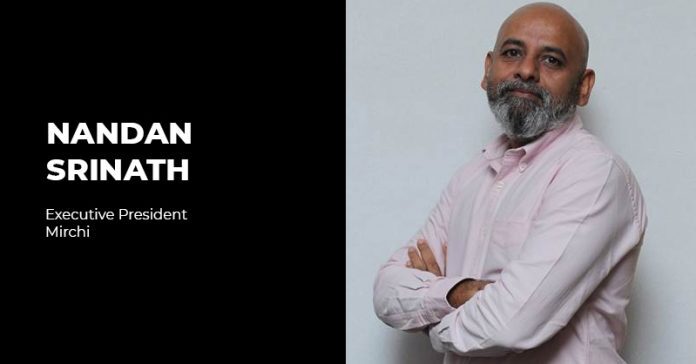
The entertainment industry, especially music consumption & distribution, has changed drastically over the last two decades. From LP’s to cassettes and MP3’s, from FM radio to OTT and digital, from Live events to Zoom concerts, the industry has seen it all. Entertainment consumption across the globe is rapidly growing across digital formats. The sheer increase in the number of devices that can support digital media, along with increasing internet penetration and speed, has provided consumers with an option to access any content of her choice, anytime, anywhere.
According to the PwC Global Entertainment & Media Outlook 2019-2023, the global entertainment industry’s digital revenue is expected to stand at a whopping 61.3% of its total revenue by 2023.
The media and entertainment industry is projected to grow at a CAGR of 13.5% from 2019 to 2024 and is estimated to reach US$ 43.93 billion by 2024. This optimistic industry forecast with evolving consumption trends will push the boundaries of entertainment formats and platforms.
The radio industry, although having dominated the music arm of entertainment for decades, is also witnessing the dramatic winds of change — most rising to the challenges of new consumer preferences, new distribution platforms, new norms for talent spotting & management, and indeed new ideas of content creation. Riding the digital wave, traditional radio businesses are steadily going beyond just radio offerings and spreading across multiple formats, languages, and platforms.
Today, as a consumer, we are spoilt with a variety of entertainment formats. Be it film & episodic content, podcasts, e-sports, video games, or something as simple as music streaming; consumption options are multiplying on the back of the cheapest data plans worldwide – intuitively teaching consumers new ways to content-snack every day.
As a result, India is all set to emerge as the world’s sixth-largest OTT market in a mere three years, maybe faster. That market itself is expected to grow at a CAGR of 28.6% over the next four years to touch revenues of $4.0 billion as per a report from Media Partners Asia. Indians are the 3rd largest nationality listening to podcasts with an estimated 50 mn users in an average month.
In music streaming, Gaana alone hit 150 mn MAU’s in 2019, and all the services together would be in the 250mn user mark by now. Combine that with the dramatic surge in video consumption — whether YouTube, Instagram or Tik Tok avatars and dramatic growth in voice-based search and it may seem obvious that entertainment brands & content creators are best off creating & serving content across the spectrum of consumer choices.
Another integral part of expanding beyond radio is to dive deep into other content platforms. In India, smartphone penetration was one of the most significant factors that aided the hike in digital entertainment consumption over the last 5 years. The cheapest data plans in the world mean that the average Indian user now uses 16+ GB of data per month. That, by the way, can mean over 60 hours of video consumption a month.
Video grabs much of that data, but music streaming, podcasting, audio-books are all playing a part. Increasingly, the well-heeled are using their smart (and large screen) TV as a default destination for things non-video as well. So – we now have a huge number of platforms, multiplied by a huge range of connected screens. Can radio & content companies choose to ignore any of these boxes?
In a country as diverse as India, language can either make or break a brand’s relationship with its consumers. Radio, being a medium known to understand the beat of regional market trends and sentiments, already has a deep-rooted network across India. Unlike most other content creators, radio companies have a head start in serving a width of languages. According to the Google KPMG report, Indian language internet users are expected to grow at a CAGR of 18% to reach 536 million by next year, while English users are expected to grow at only 3% reaching 199 million.
Diversifying content not only by format but also by language within each format, allows the radio industry to truly build a moat that blends linguistic expertise, local nuance and creativity. Multi-lingual content is one aspect, the other is local content, with local talent and tapping unique regional characteristics. Suddenly it becomes vital to energizing local teams that understand the language as well as the beat of these cities to start building a bank of content across formats & platforms.
For a brand backed with a proud radio legacy, the goal is to be ever-present across the content landscape – across formats, platforms and languages, providing everything from humour to film & music content, from podcasts to live entertainment. The very architecture of being universally present is synonymous to what radio as a format stands for. With this new array of opportunities arising from every corner, we are creating new content and populating across platforms.
The entertainment industry, just like any other, is always changing. We will continue to see the infusion of modern technologies, new formats and content platforms. At the same time, major radio players will reinvent and strengthen their core business — radio — while exploring newer possibilities, especially on digital. In years to come, we will see the traditional and new age entertainment mediums working together in synergy to coexist and thrive.
This piece has been authored by Nandan Srinath, Executive President, Mirchi.
Comments
comments
